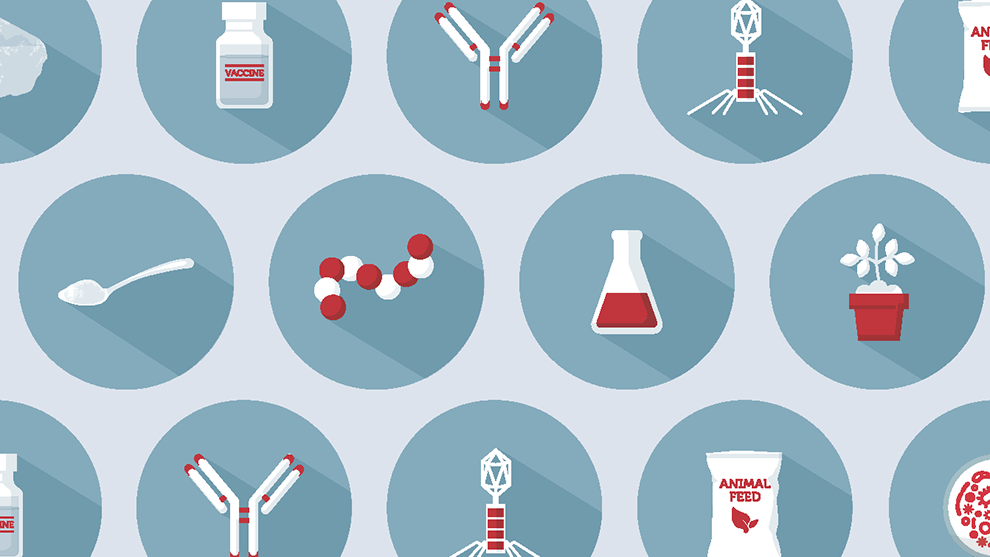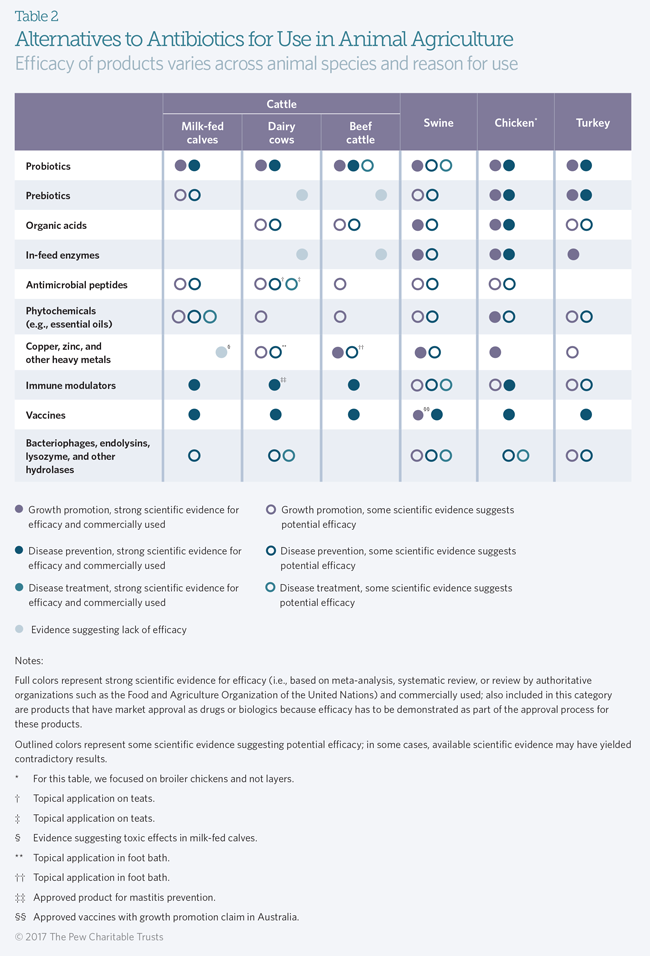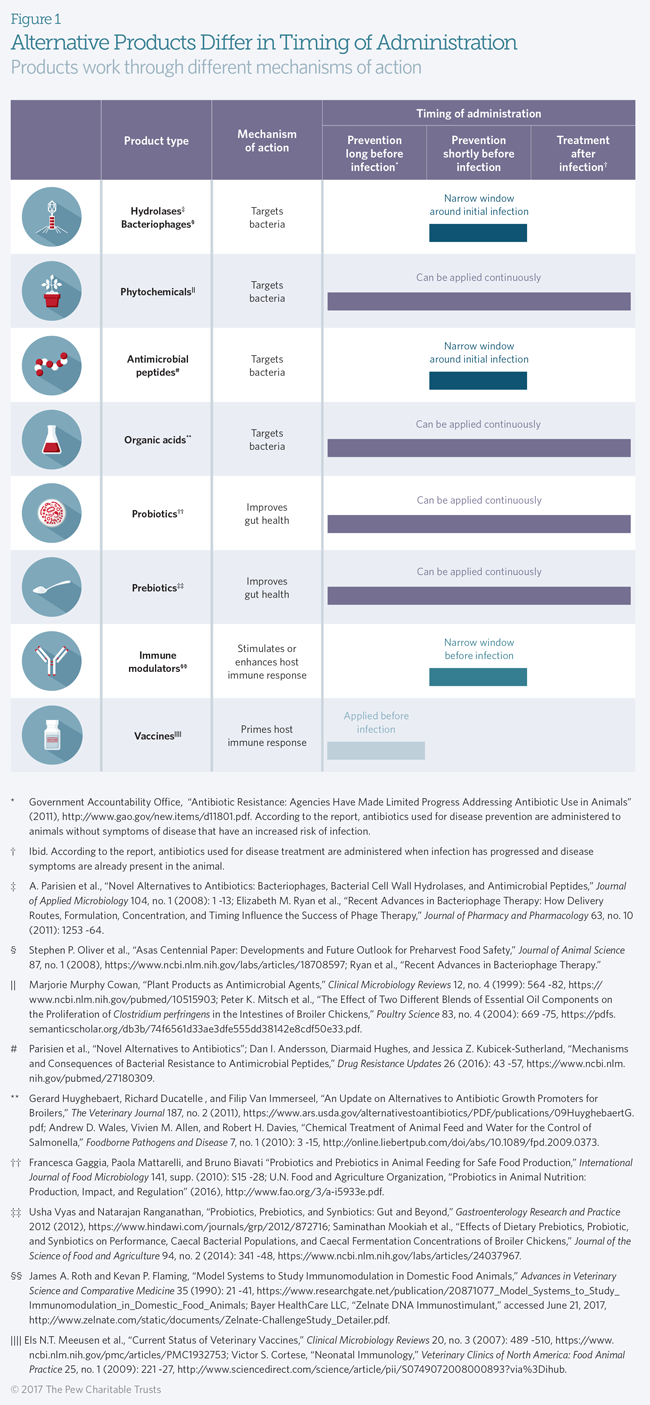Alternatives to Antibiotics in Animal Agriculture
Vaccines, probiotics, immune modulators, and more can help maintain healthy herds and reduce the need for antibiotics
The use of antibiotics in any setting contributes to the growing global threat of antibiotic resistance, so it is important to minimize the use of these drugs. This means eliminating unnecessary uses and finding other ways to prevent infections. In animal agriculture, alternative products play a crucial role in allowing farmers and veterinarians to reduce or largely phase out the use of antibiotics. Vaccines are among the most promising and widely used of these alternatives, but prebiotics and probiotics and other innovative products are also in use or currently being investigated. Many alternative products enhance animal productivity and prevent infection at the same time, which could make them particularly attractive for commercial operations. To date, there are fewer options available for treatment.
This table summarizes the available evidence for efficacy in each major food-producing species based on a comprehensive review of the scientific literature and expert interviews conducted to evaluate commercial use. (See the report appendix for methodological details regarding the literature search and expert interviews.)
The effectiveness of alternative products can vary considerably by species and purpose of use. More research is needed to understand why efficacy is so variable and to ensure optimized use, but this is complicated by the fact that the mechanism of action (i.e., the molecular processes that generate the desired effect) for many alternative products is not well understood. Alternative products also differ in how their use has to be timed to assure effectiveness.
Some commercial food animal producers are already successfully using available alternatives for growth promotion and disease prevention, including probiotics and vaccines. A variety of other alternatives for growth promotion and/or disease prevention have been proposed, and early results are positive, but more data under realistic conditions are urgently needed, as are data on potential interactions among alternatives.
Several factors may hinder the commercial development of these approaches, including practical challenges with bringing these products to market and concerns about limited market size and a potential lack of incentives to use alternatives, particularly if antibiotics remain available to producers and veterinarians.
To optimize the use of scarce public research and development resources, priority should be placed on areas of greatest need for products to replace antibiotic use. However, to develop an evidence-based prioritization, a comprehensive understanding of animal disease conditions that necessitate antibiotic use and the roles antibiotic alternatives can play is crucial. Emphasis needs to be given to on-farm antibiotic use data to tailor and prioritize future research efforts to areas of greatest antibiotic consumption.
Alternatives have the potential to replace antibiotics in many situations. This can reduce antibiotic use in animal agriculture and allow these lifesaving drugs to be preserved for use when absolutely needed to protect human or animal health. Focused research and development will help bring promising technologies to the veterinary market and guide their use. That, in turn, will help reduce antibiotic use in animal agriculture without endangering animal health, productivity, and welfare.
Note: This report provides an overview of non-antibiotic alternative products that are available to reduce the need for antibiotics in animal agriculture. A separate report examines potential strategies that can be implemented on farms and feedlots to reduce the risk of human illnesses caused by pathogens in meat and poultry.












